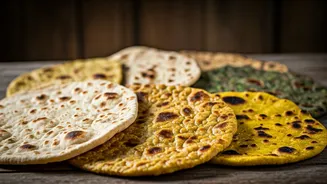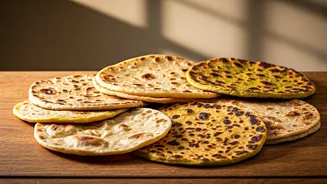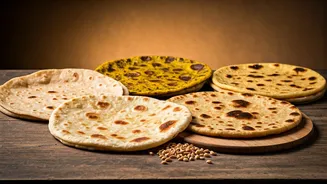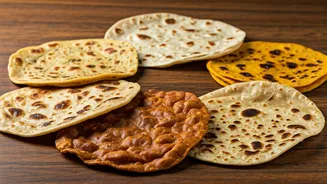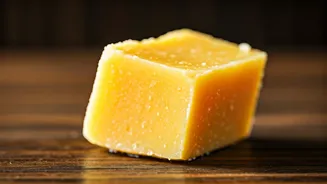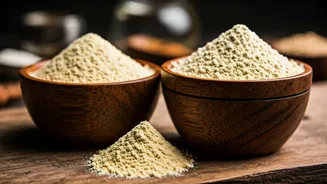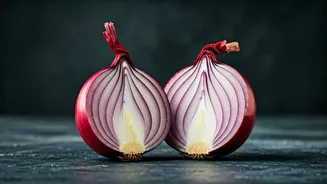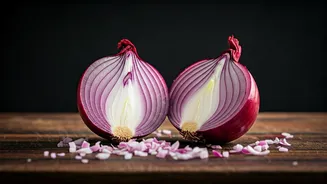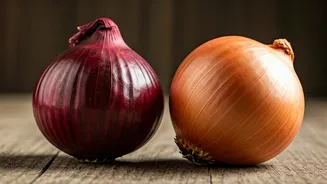Roti Overview
Rotis, an indispensable part of Indian cuisine, represent more than just food; they are a symbol of culture and tradition. Different types of rotis are made
from various flours and prepared in diverse methods, which in turn impact their digestibility. The article will explore how weather can impact the consumption of different rotis. Understanding these aspects allows for a more informed and health-conscious approach to enjoying this staple food. Whether it's a cold winter day or a warm summer evening, selecting the right roti can significantly influence your experience.
Whole Wheat Roti
Whole wheat roti, a cornerstone of Indian meals, takes approximately 2-3 hours to digest. The high fiber content found in whole wheat aids digestion, making it a good choice for those wanting to maintain a healthy digestive system. This particular type of roti is most enjoyable during the cooler months, such as winter or the rainy season, when the body craves warming and hearty meals. It provides sustained energy and helps keep you feeling fuller for longer periods, which is particularly beneficial when the weather is cold.
Bajra Roti
Bajra roti, often consumed in North Indian states, is known for its earthy flavor and nutritional value. The digestion time for bajra roti is around 2-3 hours. This type of roti is best consumed during the winter season. The warmth provided by Bajra makes it a perfect complement to the colder climate. It is rich in iron and other nutrients and is therefore a favored option during cooler months.
Makki Roti
Makki roti, made from maize flour, has a digestion time of approximately 2-3 hours, similar to whole wheat and bajra rotis. Similar to bajra roti, it is most suited for winter consumption. Its hearty texture and slightly sweet taste provide a feeling of warmth, which is desirable during the cold season. It is a good source of fiber, which helps keep the digestive system working well.
Jowar Roti
Jowar roti is another nutritious option, taking about 2-3 hours to digest. Given its high fiber content and easily digestible properties, it's suitable for the colder months. Its warmth-giving properties and rich nutrient profile offer both comfort and sustenance during colder times. Including jowar roti in your winter diet provides warmth and essential nutrients.
Rice Roti
Rice roti, is lighter and faster to digest, usually taking around 1-2 hours. This makes it a good option when you want a meal that is less taxing on the digestive system. It's best suited for the warmer months. As summer approaches, rice rotis are ideal to stay light and prevent digestive issues that can be more common in the hotter weather. Its lightness also makes it a great choice for those looking for a gentle, yet filling option.
Besan Roti
Besan roti, made from gram flour, takes about 2-3 hours to digest. The best time to eat besan roti is during the winter. Besan provides a warm quality that complements the colder weather and makes it a filling choice. The nutrient-rich properties of besan provide sustenance and help the body stay warm in the winter.
Multi-grain Roti
Multi-grain roti, incorporating several grains, can have a digestion time of 2-3 hours. It's a great choice during any season, although it may be more appropriate for colder months due to the variety of ingredients that usually involve warming spices and flours. The different grains offer a range of nutrients, providing a well-rounded meal. This flexibility makes it a versatile choice for any weather, ensuring a balanced and nutritious intake.
